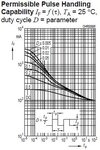Hi friends,
I´m working with IR image capture.
And I must develop a light source to drive current throught the LED array.
In order to increase lighting, most strobe controllers systems operate with pulsed wave trains.
According datasheet, we can handle small energy packs ( Dutycicle=1% / Overcurrent = 20x ).
However, I don´t know what is the common ratio used.
Could somebody give to me some guidance ?
PS.: I also don´t know the impact on long term life cicle
+++
I´m working with IR image capture.
And I must develop a light source to drive current throught the LED array.
In order to increase lighting, most strobe controllers systems operate with pulsed wave trains.
According datasheet, we can handle small energy packs ( Dutycicle=1% / Overcurrent = 20x ).
However, I don´t know what is the common ratio used.
Could somebody give to me some guidance ?
PS.: I also don´t know the impact on long term life cicle
+++
